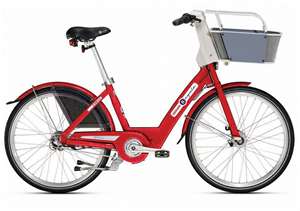Bicycles are ideal for trips that are too far to walk but too short to drive. They are are an environmentally friendly, economical and healthy way to get around town — either your own town or a place you are visiting. Bike sharing is a way to reap the benefits without buying or maintaining a bike, filling the gas tank or paying for parking. According to the National Association of City Transportation Officials (NACTO), bike share riders took over 28 million trips in 2016. This number is higher than the average annual number of people visiting Walt Disney World. The biggest bike-sharing systems can be found in New York, Washington DC, Miami, Chicago, and Greater Boston. 
B-cycle is just one of a number of growing national operations that install bike docking stations throughout a community. Fees vary from city to city. Using a card swipe to unlock the rack, members may pick up a bike from any station and return them to any other station. Typically, there is a charge to become a member, which can be for as short as a day or as long as a year. The first half-hour of use in a day is often free as well, with charge accruing for additional use. Bikes are sturdy, adjustable, come with built-in locks and baskets to carry goods. If there’s a problem, call the customer service, and the company will remedy the situation by phone or send out a service vehicle to assist.
Other bike shares can be found in communities and on campuses. FordGoBike can be found in several California communities. PGH Bike Share offers bike sharing in the Pittsburgh area. The Better Bike Share Partnership is funded by The JPB Foundation to build bike share systems. The partners include PeopleForBikes Foundation, NACTO, and other companies.
If you don’t have access to a bike-sharing community and live in a downtown area, talk to your city organizations about starting one. Or go small – organize a group of friends and family to share a bike or two.
More articles on bikes and no-car savings:
